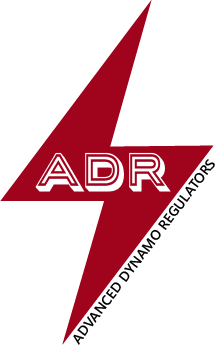Since the beginning, I have had a crude but effective regulator test machine. It has a Lucas C40, and runs at a constant (high) RPM. It works well, but is limited. A couple of years ago we were working on regulators suitable for Bosch and Delco dynamos. I got another C40 and rebuilt it. I added a switch that would change the field polarity so that it could function as either the equivalent of a Bosch or Lucas style.
Unfortunately it was still rated at 22A continuous output. For testing of a regulator, it can be pushed to 25A for short periods. But it absolutely will not go over 30A.
In late 2020 I decided to work on The Beast. It will have both a Delco generator and a Lucas dynamo. It is hard to find units designed for more than 35 amps. So, at this time I have 35 amp rated generators which should be able to manage well over that for limited durations. It will have a number of switches controlling things like 6 or 12 battery connection, Positive or negative ground, Lucas or Delco generator. Another switch is for safety interlock to prevent the battery from being switched into the circuit accidentally. Other switches are there to polarize each dynamo for when the ground polarity is changed. There are readouts for the voltage and current on the battery output, dynamo input and field drive at the regulator. There will be 16 high power resistors to provide the load. It will need up to 720 watts of load!
To make it all spin, I am using a 1.5HP 240V 3-phase motor with a Variable Frequency Drive. It is a little inconvenient that the VFD requires 240V supply, not 120V. But at 1.5HP, 120V would be barely up to the task. Fortunately my shop already had a 240V outlet (just one).
